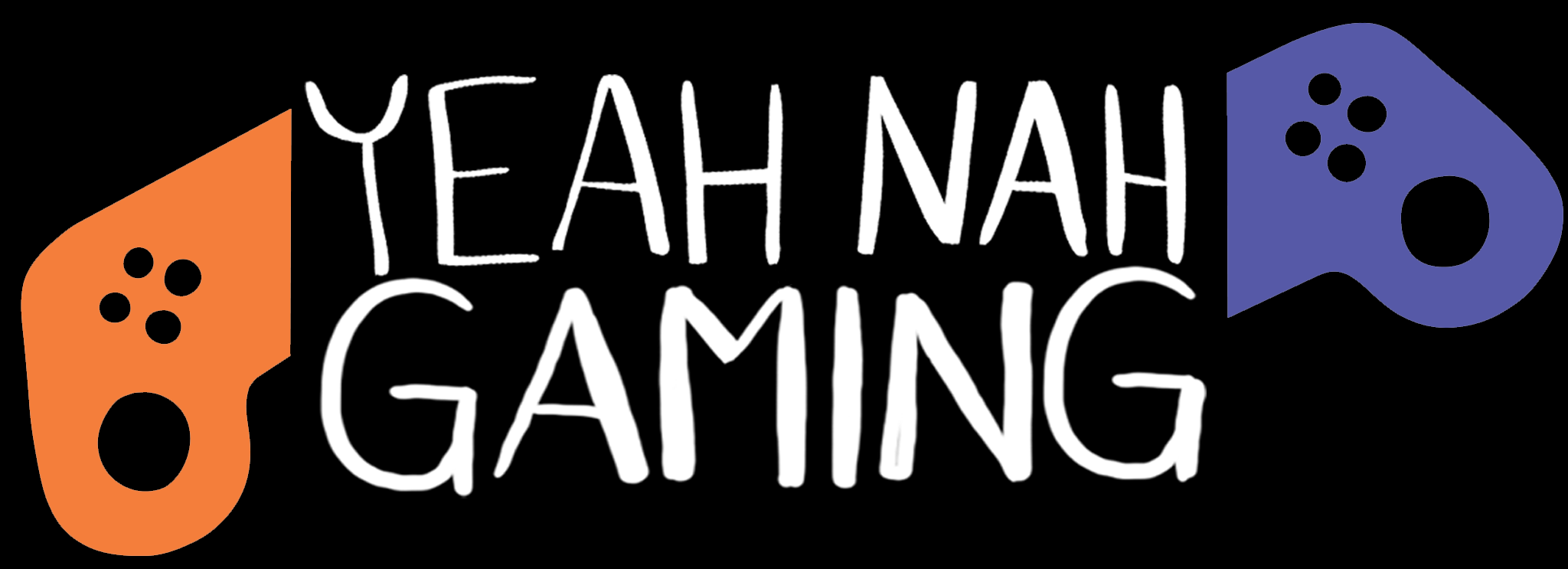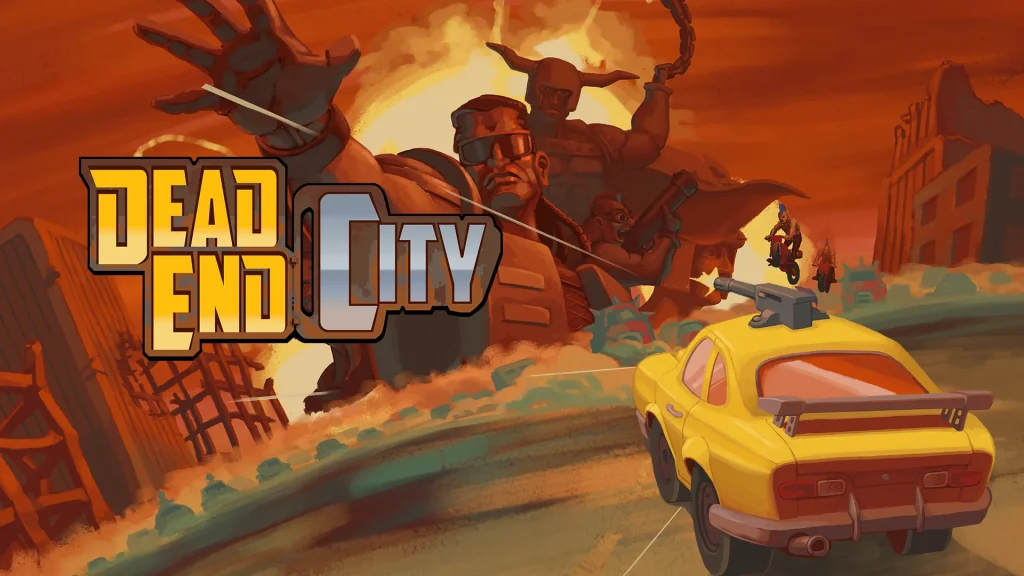There are a lot of shoot-’em-ups on Switch. Literal hundreds. A lot of all-time greats among them, too: Mushihimesama, Crimzon Clover, Darius, Aleste, Tiger Heli, Cotton … the list goes on. So the bar to being called “one of the best shoot-’em-ups on Switch” is a high one, to say the least.
Dead End City is one of the best shoot-’em-ups on Switch.
Imagine Mad Max as a vertically-scrolling arcade shooter. Instead of spaceships and fighter jets, you’ve got heavily-armed muscle cars—“Chariots”. Instead of space stations and warzones, you’ve got a post-apocalyptic desert wasteland ruled over by a ruthless gang of oddball punks. All this in a game that wouldn’t have looked the least but out of place next to a Raiden machine in the local arcade (remember those?) had it come out in ’92.
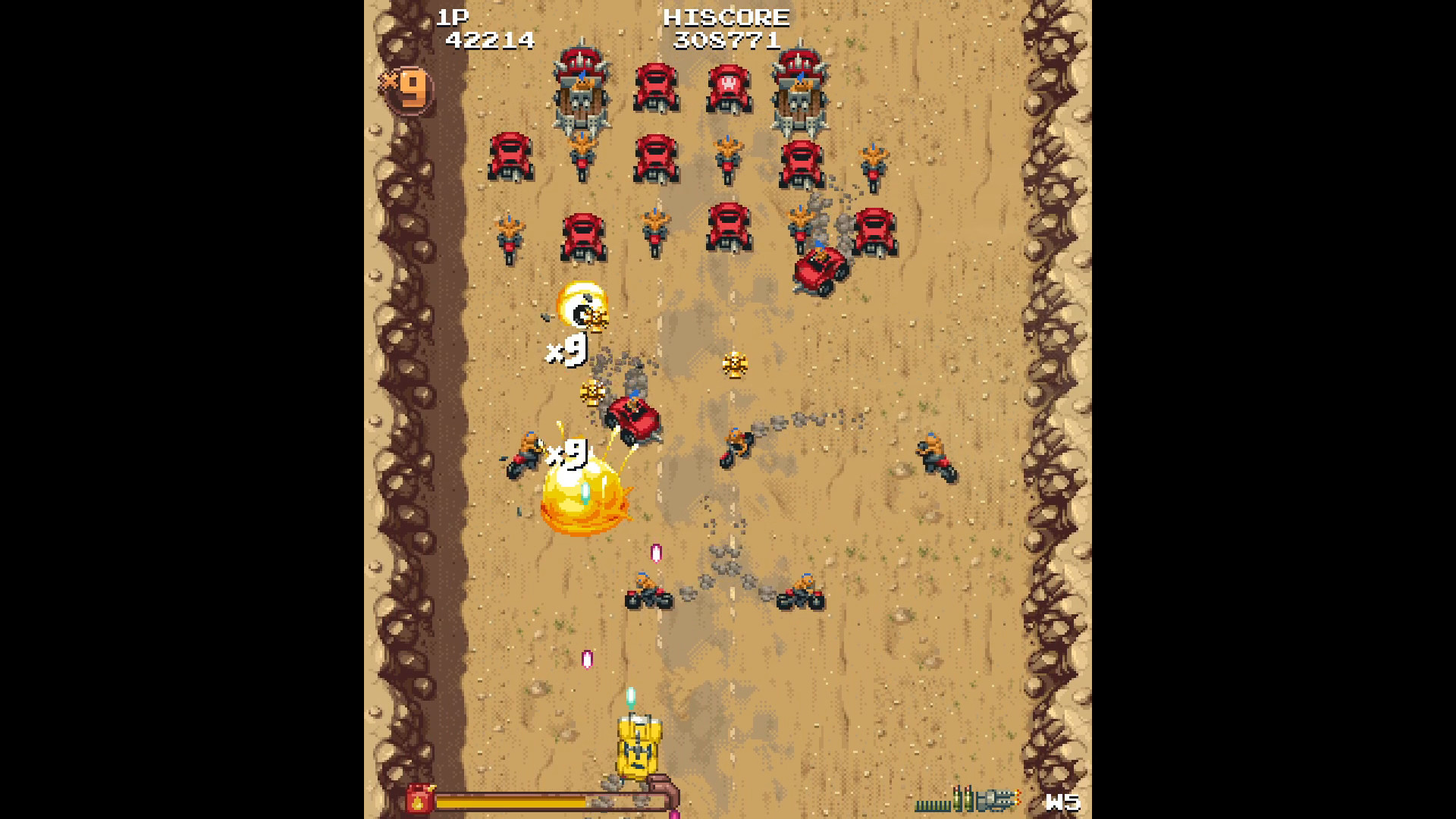
To that point, Dead End City is a love letter to the games of the late 80s and early 90s. Chunky, colourful, detailed pixel art evokes the visual style of the likes of Raiden and Aero Fighters, although with plenty of its own flourishes and the unique wasteland setting. Big hitboxes and an emphasis on “honest dodging” over precision weaving through a metric tonne of enemy bullets call to mind a style of shoot-’em-up that was much more common before CAVE and Touhou came along. Enemy formations take their cues from older gallery shooters like Galaga as much as from the scrolling shooters they inspired.
At the same time, finely-tuned design and a host of clever innovations ensure that for all its retro influence, Dead End City feels anything but archaic. Sure, your car’s weak spot might be bigger than that of an average danmaku ship, but never to the point of feeling unfair or unwieldy in the way that ye olde shoot-’em-ups often do. Credit goes to the bullet pattern design, too: dense and chaotic (especially in the latter stages), while carefully balanced around hitbox size. Micro-dodging remains a valid possibility (and necessity, sometimes), without ever feeling like you’re trying to drive a tank around Wellington’s tiny one-way streets. More importantly, the patterns are crafted to be dynamic, visually interesting, and fun to navigate as they balance twitch dodging, pattern recognition, and strategic bullet herding.
Dead End City builds on that foundation with a trinity of life, power-up, scoring systems that come together beautifully. Fuel is health: taking a hit knocks off a chunk, and it also constantly drains (but even with an empty tank, you won’t die until you take a hit). You can top up with fuel canisters that drop fairly often, and if you pick one up when your tank is full, you’ll temporarily enter a powered-up “top-off mode” state. Each Chariot also has a unique special weapon that charges up with ammo dropped by destroyed enemies, and you can store a few charges at once.
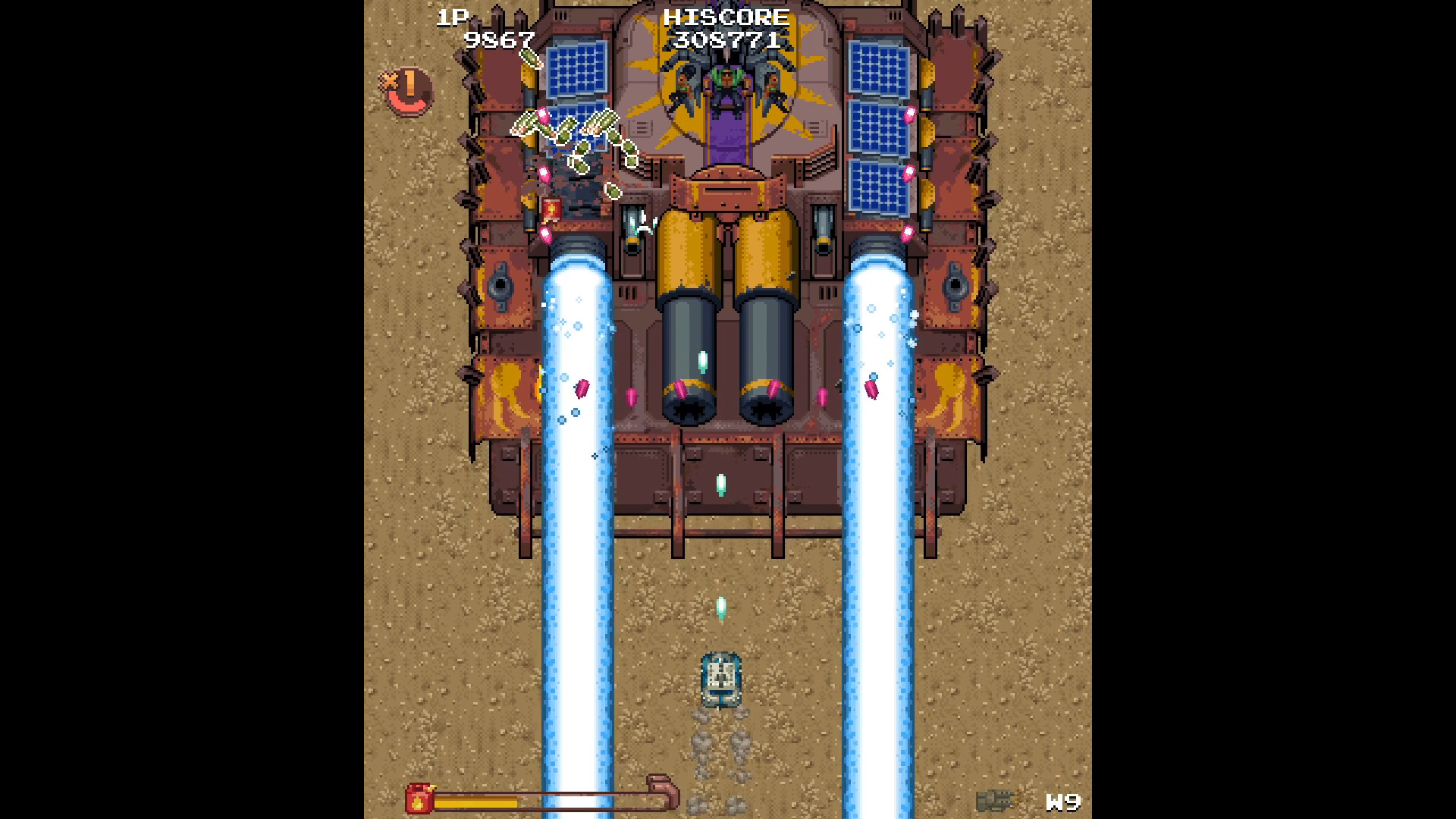
Things start to get interesting when you max out your special weapon stock. At this point, you enter “fuel time”: all ammo drops turn into fuel drops instead, ensuring a fairly steady stream of health recovery. Hoard your special weapons instead of using them, and Dead End City becomes fairly forgiving … at the cost of scoring potential. You see, special weapons are also the quickest way to jack up a score multiplier, and to earn lucrative medals when the multiplier caps out at 9. And while fuel time means you can survive a fair few hits, each shot you take cuts your multiplier in half.
In that, Dead End City creates a systemic dichotomy survival and score-focused play. Staying in fuel time as much as possible leaves plenty of room for error, but climbing the leaderboards requires taking more risks and leaving the comfort of that safety net behind.
It’s when you start digging into the nuances of this push and pull that the real brilliance of the game starts to become apparent, because things aren’t nearly as black and white as they first appear. Yes, fuel time gives you room to breathe, but the cost of not using special weapons isn’t just score—it’s also firepower, and the least dangerous enemy is a dead one. Clever use of the big guns can be a survival move as much as a scoring one, when it means quickly removing bigger threats. There’s also a little fuel bonus after each enemy wave that increases with score (along other factors).
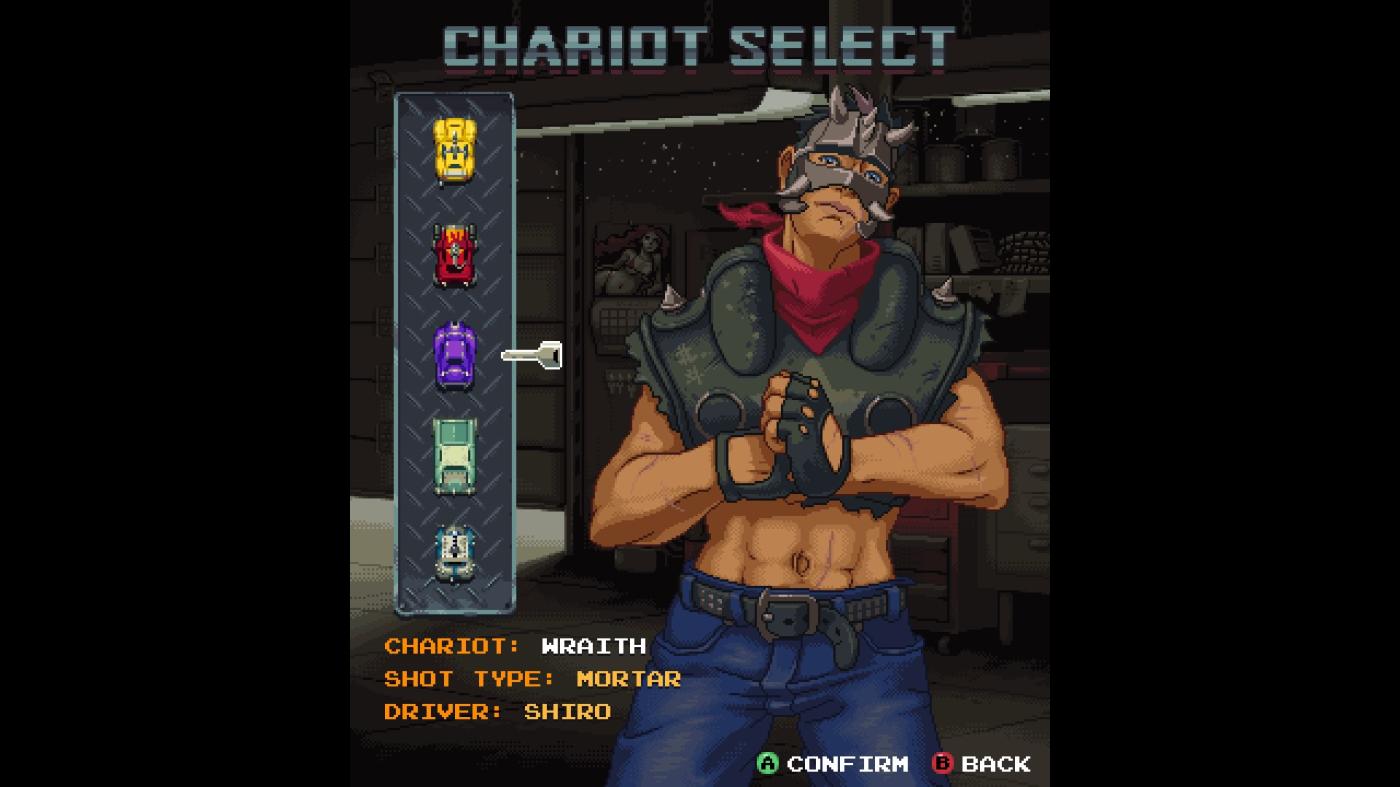
As such, this is a game where the dynamics between “survival” and “scoring” constantly shift as you master its intricacies. Fuel time is a safe if inefficient “default”, while an organic loop of practice and mastery lets you gradually rely on it less, in favour of more advanced techniques—at your own pace, and in your own way. Even among the genre’s kings, such finesse in the way systems interact with one another is rare, and Dead End City finds itself in esteemed company.
In terms of game modes, you’ll find a standard five-stage arcade mode in both Normal and Hard variants (both decently but not excessively challenging), score attacks for each individual stage, and “Highway”, a particularly impressive caravan mode (two-minute challenge stage designed with scoring competitions in kind). Each Chariot has its own distinct Highway level tailored to the capabilities of the Chariot in question, and each based on a different arcade mode stage. There’s a lot of fun to be had there, especially with some friends (or rivals) in the mood for a scoring contest.
A wealth of unlockables introduce a bit of longevity beyond the inherent appeal of arcade mastery. Four of the five Chariots need to be unlocked (by defeating secret rivals in arcade mode), as does Hard mode (by clearing Normal). You can also buy them—and various other goodies like alternate colours, artwork, and a sound test—from an in-game shop using points you collect while playing.
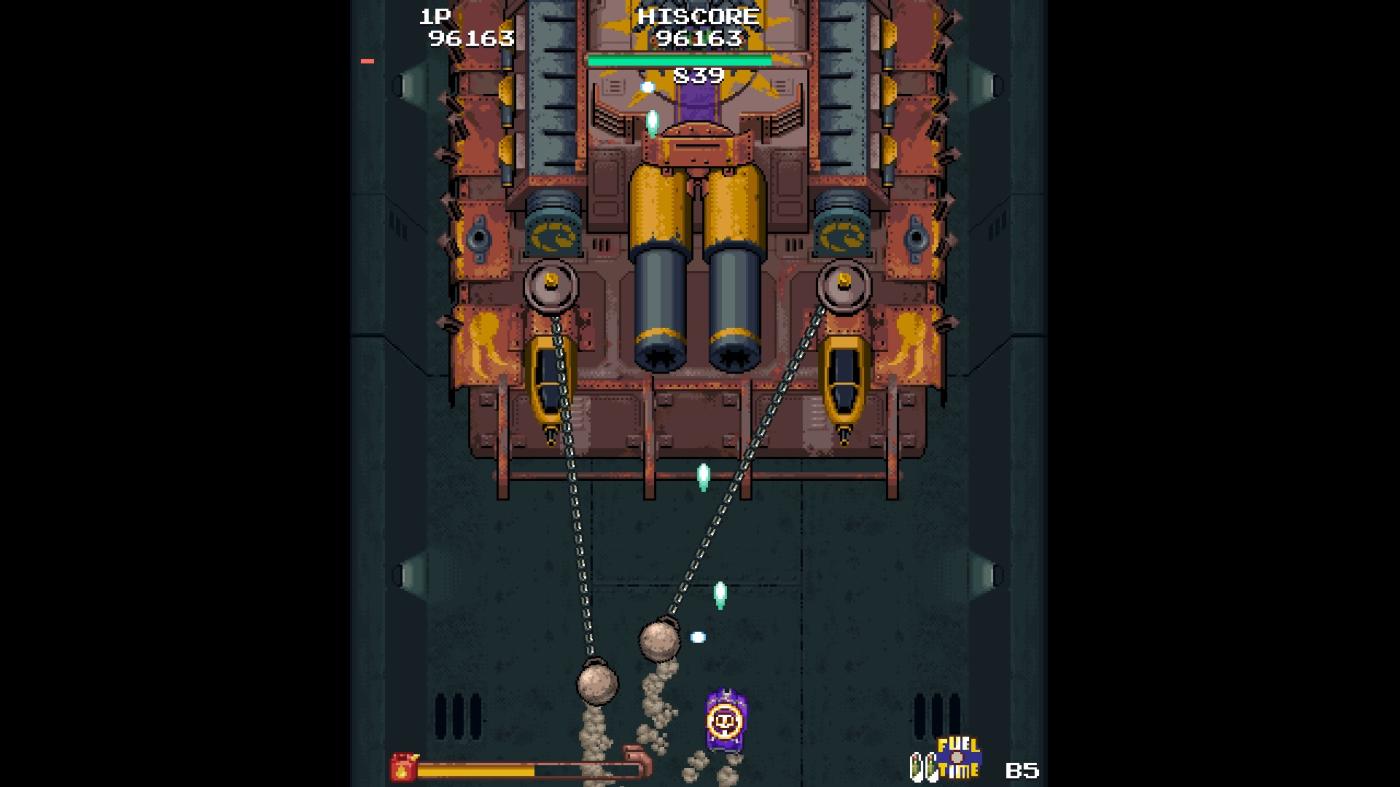
Tate mode (vertical display), a range of different options for enemy bullet colours, and an unlockable option to display your Chariot’s hit box are welcome additions. A few notable omissions do hold back the feature set, though: there’s no button config and no practice mode, both of which I’d call essential for any console shoot-’em-up. At the same time, Dead End City is largely the work of a solo developer (alongside a small team for the Switch port) so it’s understandable that some things couldn’t make the cut.
Oh, did I not mention that this is a solo effort? Pixel Licker LLC is a one-person team, with a few games under their belt but nothing nearly as ambitious as Dead End City. That makes this result all the more impressive: you don’t just wake up one day and casually drop one of the best shoot-’em-ups on a console brimming with bona fide classics. But through masterful design in every regard, Dead End City earns its place among the greats.
There's no shortage of top-class shoot-'em-ups on Switch. With its Mad Max inspiration, retro style, and masterful design, Dead End City earns a place among the best of them.
